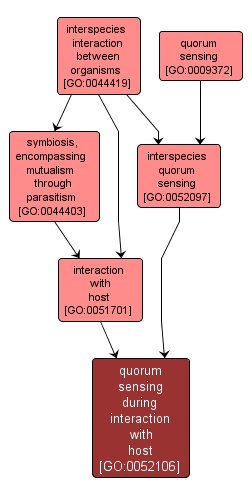| Desc: |
The process in which a community of single-celled organisms living in intimate contact with a host organism monitors population density by detecting the concentration of small diffusible signal molecules. The host is defined as the larger of the organisms involved in a symbiotic interaction. |














